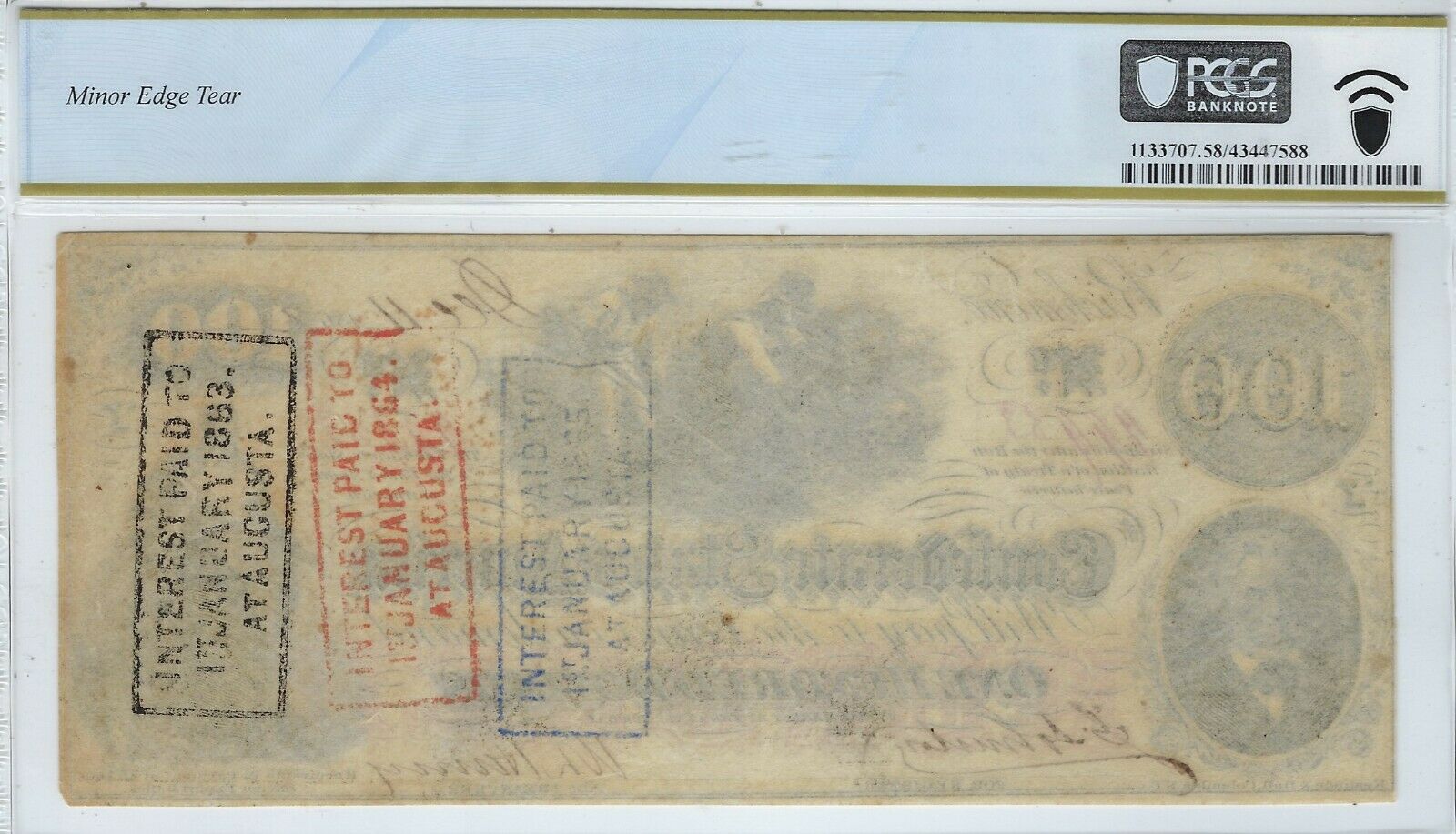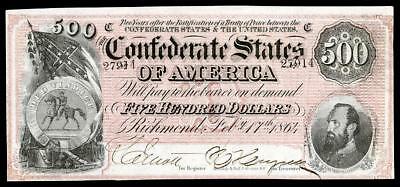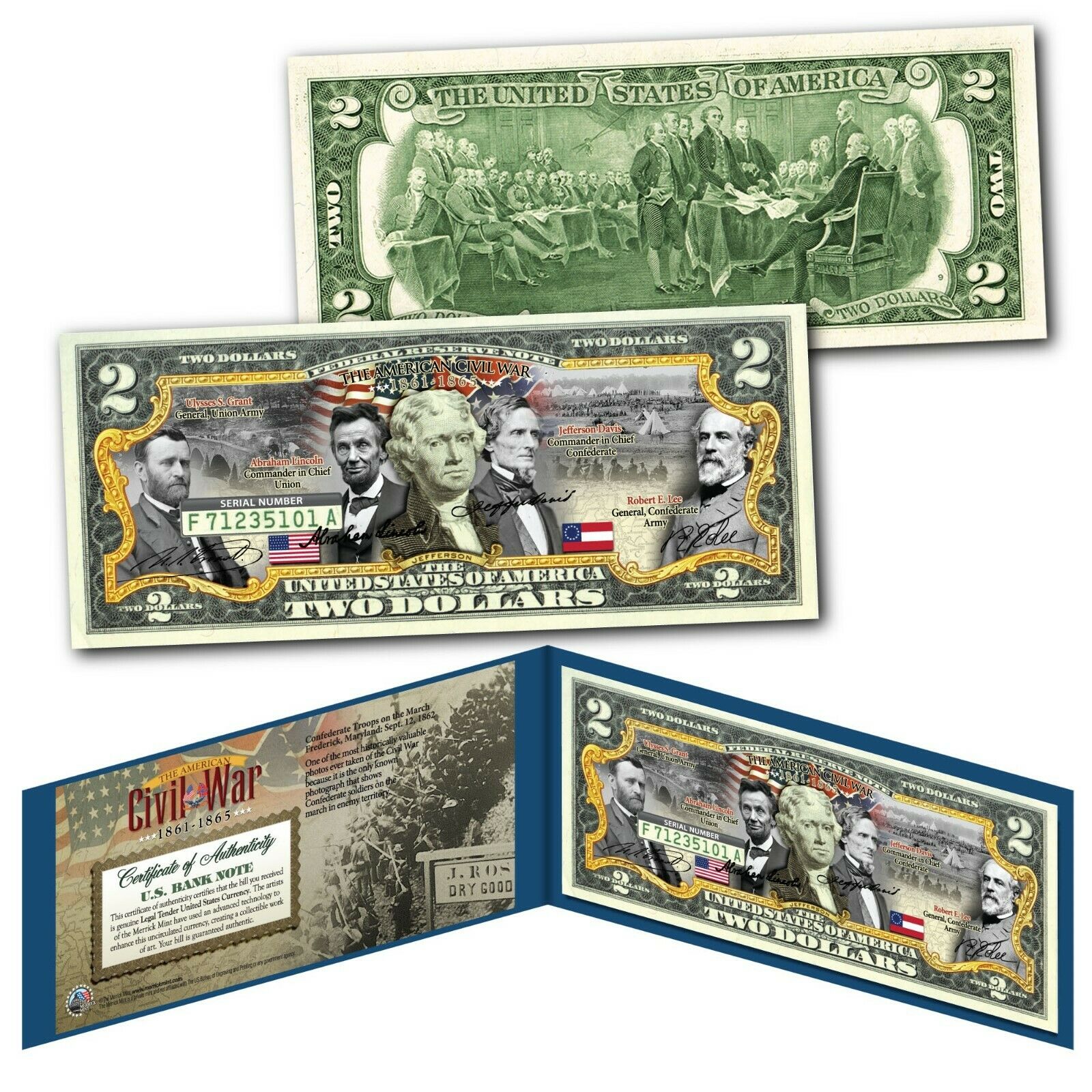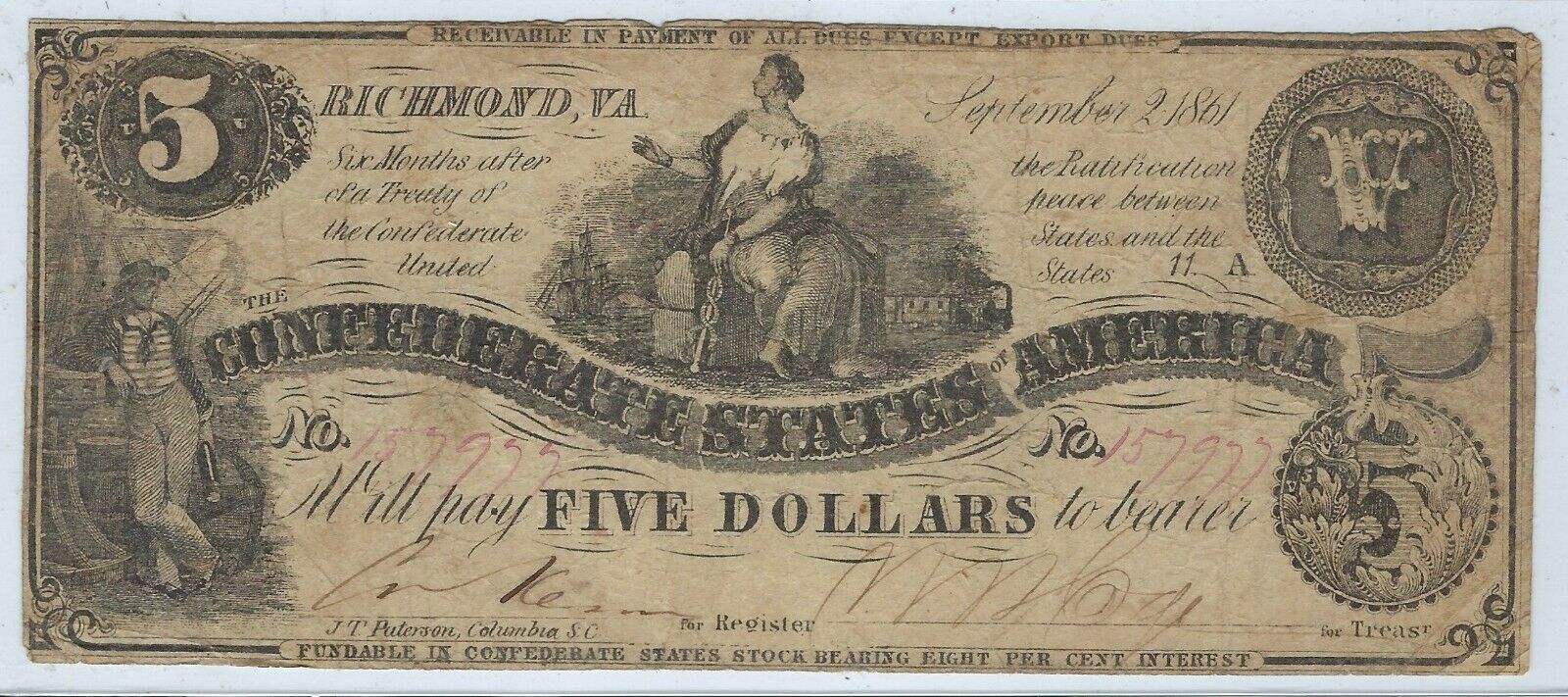-40%
T-41 PF-15 1862 0 Confederate Paper Money - PCGS-B Choice About Unc 58!
$ 2.9
- Description
- Size Guide
Description
T-41 PF-15 1862 0.00 CSA Currency. J.C. Calhoun to the left. Slaves hoeing in the center. “Confederacy”, right. Scroll 2. Inner frame goes under "Except". Printed on plain paper. Serial number 99953. Plen Y.Three August (GA) interest paid stamps - black 1863, red 1864, blue 1865.
PCGS Banknote Grading Choice About Uncirculated 58! Small edge tear right - I needed a 10x glass to find it. Fully framed!
Genuine.
This was the third high volume interest bearing 0 note issued in large quantities by the Confederacy. They paid 7.3% annual interest, or double that of the First Series notes of Montgomery and Richmond. Some were issued by hand by agents. Their signatures, and occasionally the place of issue appears on the back. The T-41s also bear interest paid stamps on the back indicating that interest was collected by the bearer. The center of these notes has a vignette of slaves hoeing in a field, hence the term “Hoers”. John C. Calhoun, a father of states rights, is to the left. An allegorical representation of the “Confederacy” as represented by Columbia is to the right. These notes were payable six months after the ratification of a Treaty of Peace between the Confederate States and United States and were not fundable.
This type comes on high quality bank note paper. It also was engraved, and not lithographed. As they were interest bearing, many were saved, and high quality examples are easily found. However, many were not cut well due to the higher volume of production.
There are a number of different interior margin line configurations. I describe and picture these below, but, for simplicity, I stick with the Criswell basic variety construct. This separates the varieties into two major plate groupings: the lower inner frame line runs all the way across the bottom of the note including under “Except”, and the inner frame line stops at “Except”. I leave it to others to describe the minutiae of every variation, which may drive the number of T-41 varieties to several hundred, but few, if any, are significant. The significant watermarks and date issues are covered here with condition census information. Additionally, there are people interested in collecting these by date and those listings may be found in the “Register of the Confederate Debt” by Thian.
The plate configurations have not been completely worked out, and research continues. James Astwood published a series of articles describing these notes in Paper Money magazine
postulating another master plate. I’m more inclined to believe the proposed master plate is actually a retouching of a master described below. Also, there are also different sizes of plates that printed three different size notes with variances of 1/8
th
inch. This is another reason why I take the simpler route for this work as most people cannot discern these minor variations easily. A book focused on T-41, or on the 7.30 notes alone, may explore these in more detail.
A note about 3rd party grading. PCGS and PMG do a good job putting a floor on quality within a grade range and have become proficient in detecting repairs (though occasionally they miss something, or see something that is not there, as we all can).
Notes housed in Net or Apparent holders have a wide range of quality from very nice (in rare cases may be nearly choice) to dogs with major problems, so each needs to be evaluated on their own.
However, PMG and PCGS focus on technical grading due to circulation and damage and do not have a mechanism for evaluating condition or eye appeal - whether a note is average, better than average, choice or gem for the grade based on its color, trim and margins. The exception to this are slabbed notes of New or Uncirculated grades to some degree. This is important as Very Fine, Extremely Fine or AU notes can have a wide range of values depending on these factors not reflected in the slab grade. A fully framed Confederate or obsolete note is worth considerably to a lot more than one that is trimmed into the margin for the same grade. Likewise, color is important. These factors can affect the value of a note by 50%, 2-1 or even 3-1, e.g., an AU 58 (PPQ or not) T-20 1861 CSA note trimmed into the margin is worth between 0 and 0. The same grade, AU 58 (PPQ or not), with a full frame and good color/inking is worth something like 0 to 00 depending on eye appeal. I will continue to use the terms plus for above average, choice and gem to mean varying degrees of superiority of condition and eye appeal of a note within a grade as documented in my book which is based on what collectors seek out and pay premiums for.
In coins, we’ve seen the third party graders add things like full bell lines, full head, full bands which reflected the market. I’d expect either the grading services or another party to do the same for paper money. If you are just buying the number on the holder for the best price, you may well be buying low end notes for the grade!
Pierre Fricke. Immediate Past President of the Society of Paper Money Collectors; Professional Numismatists Guild (PNG); Professional Currency Dealers Association (PCDA); ANA, EAC, etc...
BuyVintageMoney.
Author of the standard guide book to Confederate money - Collecting Confederate Money Field Edition 2014.
Free shipping and insurance.
eBay has announced that it will start to collect sales tax on behalf of sellers for items shipped to customers in Alabama (Jul 1), Connecticut (Apr 1), Iowa (Feb 1), Minnesota (Jan 1), New Jersey (May 1), Oklahoma (Jul 1), Pennsylvania (Jul 1), and Washington (Jan 1). Additional states are being added like Idaho and more than 20 others. This is the new internet tax out of the US Supreme Court Wayfair decision. Buyers are responsible for paying this sales tax.
See eBay information for list of states eBay charges this tax payable by buyers to eBay as part of eBay invoices -- https://www.ebay.com/help/selling/fees-credits-invoices/taxes-import-charges?id=4121#section4










